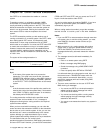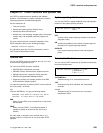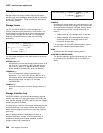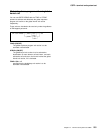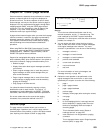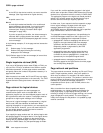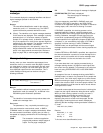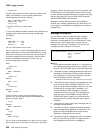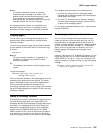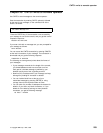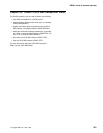CSPG—page retrieval
*ldc
Is the LDC for the device to which you want to send the
message. (See Page retrieval for logical devices.)
*ALL
A special case of *ldc.
Hhhhhh
Is the 6-digit hexadecimal identifier of an undelivered
logical message to be retrieved. You would normally
determine this identifier by entering a page query
command (see “Display information about logical
messages” on page 255).
If you do not specify an identifier, the oldest message is
retrieved. After a paging session has started, you can
omit hhhhhh because all subsequent pages are from the
current message.
In the following examples, P/ is the page retrieval transaction
identifier:
P/7 Retrieve page 7 of this message.
P/N Retrieve next page (following the one being
displayed) of this message.
P/(N)9 Retrieve page 9 of the next message (of several that
have been chained).
Single keystroke retrieval (SKR)
If you use a 3270 display device under BTAM or VTAM, you
| can use PA or PF keys, as defined in the SKRxxxx system
| initialization parameter, to enter page retrieval commands,
and greatly reduce the number of keystrokes necessary in a
page retrieval session.
After the session has ended, the PA and PF keys can again
be used for initiating transactions in the usual way. The
CICS
System Definition Guide
gives further information on this
topic.
Page retrieval for logical devices
Your application program can send messages to a
communication system such as the IBM 3600. Your
application program can also send different pages to each of
the logical devices within the system. These pages must be
grouped as a single logical message, held in storage.
Each part of a logical message is accompanied by a logical
device code (LDC) that identifies its destination. When
retrieving the pages for a logical device, you must specify the
LDC for that device. However, you do not need to do this if
the user-written program in the logical device controller
provides a default LDC mnemonic.
If you specify the page number and *ldc, delivery begins with
the specified page for that logical device. If the logical device
is in AUTOPAGE status, all pages for that logical device,
starting with the requested page, are written. If the logical
device is in PAGE status, only the specified page is written.
If you omit *ldc, and the application program in the logical
device does not provide a default, BMS selects the first page
destined for a logical device that is currently in PAGE status.
The application program in the logical unit should provide a
default LDC, because pages may be delivered to logical
devices other than those you originally specified.
In either case, if your request is the first request for a page
from a logical message, all pages (within the logical
message) destined for logical devices currently in
AUTOPAGE status are delivered after the first or specified
page is delivered to a device in PAGE status.
The getpageA command supports an *ldc specification for
nonrouted messages created for a 3601 logical unit. The
various forms of getpageA are interpreted as follows:
getpageA*ALL-resets to autopaging and delivers all
pages for the logical devices that have autopage
specified in the terminal definition, but that were
temporarily placed in page status by the CICS
application programmer.
getpageA*ldc-resets the specified logical device to
autopage and delivers the pages for that *ldc. The
command is similar to getpageA*ALL, except that it
operates only for the specified logical device.
getpageA-resets to autopaging and delivers the
remaining pages for the logical device for which pages
are currently being displayed.
Page retrieval and partitions
The page retrieval commands, including any PA and PF keys
used in single keystroke retrieval, refer to the partition in
which they are entered. For example, P/N means ‘retrieve
the next page for this partition’. The partition in which the last
paging command is entered is the
current partition
. A paging
command for a partitioned message entered on a
nonpartitioned screen (that is, after CLEAR) refers to the
current partition.
After a transition from base (unpartitioned) state to
partitioned state, or a change of partition set (that is, the
initial page display, a page display following CLEAR, or
following a change in the level of page chaining), the
current
page
is displayed in each partition. The current page is
initially the first page for that partition. It is updated by page
retrieval commands.
254 CICS Supplied Transactions




